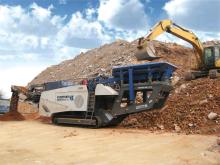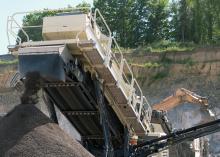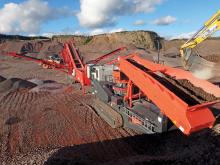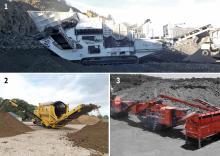
A purpose-built facility on the small island of Jersey has allowed it to double the amount of building and construction waste recycled
A Jersey haulage, demolition and recycling contractor has invested in a fleet of new mobile screening and crushing equipment.
It now provides such services as groundworks and drainage; excavation and demolition; landscaping; water deliveries; waste tanker service; topsoil supply; and high quality aggregate classification and supply.
“In recent years we have been able to expand our operations to not only encompass what we would term our core business, but have also been involved in many of the Island’s most prestigious development projects,” says Alan Langlois, managing director.
Due to the success of the business, Langlois’ services had become stretched to capacity, and in order to deal with the increased work load, while providing an even higher quality service to its customers, the total solutions company invested in the new fleet of screening and crushing equipment supplied by Sandvik Construction.
It consists of a QE340 heavy duty scalper and screener; QJ241 compact jaw crusher; and two QA140 three-way split screeners.
The machines are ideal for Langlois’ business, especially the recycling of waste aggregate materials. For example, the QJ241, Sandvik’s smallest mobile jaw crusher weighing just over 34tonnes, works throughout Jersey wherever it is required. The single-toggle crusher has a feed opening of 1000x650mm facilitating production of up to 225tonnes/hour, depending on the material and the required final material size.
In Langlois’ construction materials recycling operation 120-150tonnes/hour may be achieved when producing a 0-70mm end product. The reversible-jaw crusher accepts a maximum feed size of 500mm, and a hydraulic wedge adjustment allows a CSS (closed side setting) range of 50-150 mm.
Said to be proving ideal for recycling construction materials, the QJ241 has also found a real niche within construction sites, demolition jobs and small quarries.
Its extensive steel pipe work used in the hydraulics provides heat dissipation and a maintenance-free sealing solution and depending on operator requirements, the crusher may be operated remotely by wireless control or via umbilical cord. A PLC system controls both the level sensor at the crusher in-feed, and the rpm of the main conveyor.
The hydraulically driven feeder with grizzly allows automatic control of the feed rate from the large hopper. Additional use of hydraulics sees a hydraulic raise and lower facility on the 800mm wide main conveyor which provides clearance for the over-band magnet.
It has a load-optimised control of the hydraulics and uses a 168kW CAT C7.1 Acert engine, compliant with EU Stage IIIb emissions.
“Compared with the previous crushers we have used, the QJ241 now achieves in all applications 25% more output and consumes 30% less fuel. Thus the machine has been consuming 18litres per hour when producing a product of 0-70mm,” says Alan Langlois.
As part of a long-term strategy that has been developed to reduce the amount of recyclable materials being treated as waste, Jersey has put great emphasis on the development of a specialist materials recycling facility.
A.A. Langlois was chosen to become Jersey’s licensed recycling partner. Trading under the name of A.A.L Recycling from its purpose-built facility at La Collette it is able to haul or accept various types and grades construction and inert waste. This is then turned into building aggregates that has found a customer in the island’s construction industry.
As one the principal objectives of Jersey’s waste strategy is to improve Jersey’s aggregate recycling facilities, working with A.A. Langlois has enabled the island to have use of a “third” quarry. This has extended the life of the island’s landfill sites while building materials including bricks, blocks, granite and cement are now recycled and made into chippings, granite dust and various sizes of stone.
“We view the recycling of demolition and building waste as an opportunity to not only extend the life of existing quarry reserves, but also to reduce waste and the environmental impact of mineral extraction,” says Alan Langlois.
A.A. Langlois’ site is now able to process 230,000tonnes of building waste annually, thereby doubling the amount of building and construction waste recycled in Jersey. When the recycling programme was initiated only 10% of building waste was recycled.









